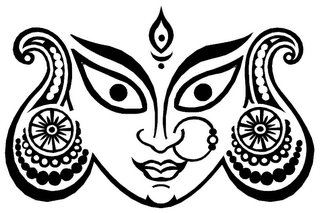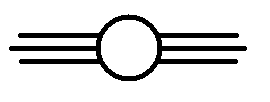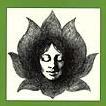Symbolism is something Hindus have always loved.
It has penetrated our society unknowingly to a very deep level. We see it all around us but more often than not we question their roots.
Shaivism is an example where such symbolism is used widely, some meanings being often startling.
Lord Shiva represents the destructive aspect of Brahman. He is the all-pervading Ishwara. With Parvati. He becomes the Saguna Brahman for the purpose of pious devotion of his devotees. Lord Shiva is the Lord of ascetics and the Lord of yogins. He is robed in space, Digambara. His Trisul, Trident, that is held in His right hand, represents the three Gunas, Sat-Raj-Tam. That is the emblem of sovereignty. The Damaru in His left hand represents the Shabda Brahman. It represents OM from which all languages orginate. It is He who formed the Sanskrit language out of the Damaru beats. The crescent Moon indicates that He has controlled the mind perfectly. The flow of the Ganges, represents the nectar of immortality. The elephant represents, symbolically, Pride Siva's wearing the skin of an elephant denotes that He has controlled pride. The tiger represents lust; Shiva's sitting on, a tiger-skin indicates that. He has conquered lust. His wearing of serpents denotes wisdom and eternity. He is Trilochana, the three-eyed one, in the centre of Whose forehead is the third fire, the eye of wisdom.
The serpent is the Jiva or the individual soul which rests upon Shiva, the Paramatma or the supreme soul. The five hoods mean the five senses or the five Tattvas viz., earth, water, fire, air and ether. The five hoods or the five serpents represent the five Pranas, which hiss in the body like the serpent. The inhalation and exhalation are like the hissing of the serpent. The individual soul enjoys the worldly objects through these Tattvas. When the individual attains knowledge through control of these senses and mind, he finds his eternal resting abode in Lord Shiva, the supreme soul. This is the esoteric significance of Lord Shiva's wearing the snake on His body. Lord Shiva wears serpents as omaments on His body. This indicates that Lord Shiva is absolutely fearless and immortal. Generally serpents live for hundreds of years. Thus wearing of serpents by Lord Shiva signifies that He is eternal.
"Namah Sivaya" is the Mantra of Lord Shiva. Na represents earth and Brahma ; Ma represents water and Vishnu ; Si fire and rudra ; va represents vayu and Maheshwara ; ya Akasa and Sadasiva. Lord Shiva has white complexion. This signifies that people should have pure hearts. Lord Shiva has three white lines of Bhasma on His forehead. This unfolds that a man should destroy the three impurities viz ego, expectation of fruits and illusion and three desires. Nandi or the bull represents the attendant of Lord Shiva.
He is the vehicle of Lord Shiva. He represents satsang. There is a famous saying, "If you have association with sages you are sure to attain God realization. Sages will guide you. They will remove the snares that lie on your path. There is no other safe boat than satsang to take one to the other shore, of fearlessness and immortality, Lord Shiva represents the destructive aspect of the Godhead. He is seen absorbed in meditation on the mountain peak of the Kailash. He is an embodiment of serenity, renunciation and indifference to the world. The deer represents the Vedas, its four legs are the four Vedas, Lord Shiva is holding the deer in His hand. This indicates that he is Lord of the Vedas. He has a sword in one of His hands. This signifies that He is the destroyer of births and deaths. The fire in one of His hands shows that He protects the Jivas by burning all that binds.
Shiva Linga is also a symbol. The literal meaning of the word Linga is "visible sign of something invisible". This Shiva Linga is of an ellipsoid shape. Linga denotes something, which has neither any beginning nor an end. It is unlimited and never-ending. The Shiv Linga is the symbol of Shiva in the act of creation. Here is a hyman on the greatness of Shiva There is no God better than Shiva, there is no hymn better than the hymn on the greatness of Shiva, there is no sacred word better than the name of Shiva.
The serpent is the Jiva or the individual soul which rests upon Shiva, the Paramatma or the supreme soul. The five hoods mean the five senses or the five Tattvas viz., earth, water, fire, air and ether. The five hoods or the five serpents represent the five Pranas, which hiss in the body like the serpent. The inhalation and exhalation are like the hissing of the serpent. The individual soul enjoys the worldly objects through these Tattvas. When the individual attains knowledge through control of these senses and mind, he finds his eternal resting abode in Lord Shiva, the supreme soul. This is the esoteric significance of Lord Shiva's wearing the snake on His body. Lord Shiva wears serpents as omaments on His body. This indicates that Lord Shiva is absolutely fearless and immortal. Generally serpents live for hundreds of years. Thus wearing of serpents by Lord Shiva signifies that He is eternal.
"Namah Sivaya" is the Mantra of Lord Shiva. Na represents earth and Brahma ; Ma represents water and Vishnu ; Si fire and rudra ; va represents vayu and Maheshwara ; ya Akasa and Sadasiva. Lord Shiva has white complexion. This signifies that people should have pure hearts. Lord Shiva has three white lines of Bhasma on His forehead. This unfolds that a man should destroy the three impurities viz ego, expectation of fruits and illusion and three desires. Nandi or the bull represents the attendant of Lord Shiva.
He is the vehicle of Lord Shiva. He represents satsang. There is a famous saying, "If you have association with sages you are sure to attain God realization. Sages will guide you. They will remove the snares that lie on your path. There is no other safe boat than satsang to take one to the other shore, of fearlessness and immortality, Lord Shiva represents the destructive aspect of the Godhead. He is seen absorbed in meditation on the mountain peak of the Kailash. He is an embodiment of serenity, renunciation and indifference to the world. The deer represents the Vedas, its four legs are the four Vedas, Lord Shiva is holding the deer in His hand. This indicates that he is Lord of the Vedas. He has a sword in one of His hands. This signifies that He is the destroyer of births and deaths. The fire in one of His hands shows that He protects the Jivas by burning all that binds.
Shiva Linga is also a symbol. The literal meaning of the word Linga is "visible sign of something invisible". This Shiva Linga is of an ellipsoid shape. Linga denotes something, which has neither any beginning nor an end. It is unlimited and never-ending. The Shiv Linga is the symbol of Shiva in the act of creation. Here is a hyman on the greatness of Shiva There is no God better than Shiva, there is no hymn better than the hymn on the greatness of Shiva, there is no sacred word better than the name of Shiva.
Now let us relate to something more modern. My friend Ani (Mr. Aniruddha Gupta) pointed out that he had seen many buildings in Bengal having this particular mark on them.

I replied saying- " This is a Shiva-Shakti mark. The three lines represent the 3 gunas - Satwick, Rajasik and Tamasik or could represent the 3 worlds. The circle represents the representation of the Motherly "teep" (bindi). How could you forget that Banga was a matrikendrik samaj?"
Please find my reasoning based on the following facts:
Tilak (meaning by Swami Shivananda, Divine Life Society, Rishikesh) :
Tilak is a mark of auspiciousness. It is put on the forehead with sandal paste, sacred ashes or kumkum (red tumeric). The devotees of Siva apply sacred ashes (Bhasma) on the forehead, the devotees of Vishnu apply sandal paste (Chandan), and the worshippers of Devi or Shakti apply Kumkum, a red tumeric powder.
The scriptures say: "A forehead without a Tilak, a woman without a husband, a Mantra the meaning of which is not known while doing Japa (recitation), the head that does not bend before holy personages, a heart without mercy, a house without a well, a village without a temple, a country without a river, a society without a leader, wealth that is not given away in charity, a preceptor without a disciple, a country without justice, a king without an able minister, a woman not obedient to her husband, a well without water, a flower without smell, a soul devoid of holiness, a field without rains, an intellect without clearness, a disciple who does not consider his preceptor as a form of God, a body devoid of health, a custom (Achar) without purity, austerity devoid of fellow-feeling, speech in which truth is not the basis, a country without good people, work without wages, Sannyasa without renunciation, legs that have not performed pilgrimages, determination unaided by Viveka or discrimination, a knife which is blunt, a cow that does not give milk, a spear without a point- all these are worthy of condemnation. They exist for name’s sake only."
From this you can imagine the importance of Tilak or the sacred mark.
Tilak is applied at the Ajna Chakra, the space between the two eyebrows. It has a very cooling effect. Application of sandal paste has great medicinal value, apart from the spiritual influence. Application of sandal paste will nullify the heating effect when you concentrate and meditate at the Bhrumadhya. Tilak indicates the point at which the spiritual eye opens. Lord Siva has a third eye at the Brumadhya. When he opens the third eye, the three worlds are destroyed.
So also, when the third eye of the Jiva is opened, the three kinds of afflictions – Adhyatmika, Adhidaivika and Adhibhautika- are burnt to ashes. The three Karmas- Sanchita, Prarabdha and Agami,- and also all the sins committed in the countless previous births, are burnt. When you apply the Tilak, you mentally imagine: "I am the one non-dual Brahman free from all duality. May my eye of intuition open soon." You should remember this every time you apply a Tilak.
There are various methods of applying Tilak. Saivas apply three horizontal lines with the sacred ashes. The vaishnavas apply three vertical lines (Tripundra) on the forehead. When they apply Tilak, they say: "O Lord, protect me from the evil effects of the Trigunatmika Maya which has Sattwa, Rajas and Tamas as its binding cords." Some Vaishnavas apply only one vertical line. Only the method of application differs, but the significance is the same in both the Vaishnavas and the Saivas.
The scriptures say: "A forehead without a Tilak, a woman without a husband, a Mantra the meaning of which is not known while doing Japa (recitation), the head that does not bend before holy personages, a heart without mercy, a house without a well, a village without a temple, a country without a river, a society without a leader, wealth that is not given away in charity, a preceptor without a disciple, a country without justice, a king without an able minister, a woman not obedient to her husband, a well without water, a flower without smell, a soul devoid of holiness, a field without rains, an intellect without clearness, a disciple who does not consider his preceptor as a form of God, a body devoid of health, a custom (Achar) without purity, austerity devoid of fellow-feeling, speech in which truth is not the basis, a country without good people, work without wages, Sannyasa without renunciation, legs that have not performed pilgrimages, determination unaided by Viveka or discrimination, a knife which is blunt, a cow that does not give milk, a spear without a point- all these are worthy of condemnation. They exist for name’s sake only."
From this you can imagine the importance of Tilak or the sacred mark.
Tilak is applied at the Ajna Chakra, the space between the two eyebrows. It has a very cooling effect. Application of sandal paste has great medicinal value, apart from the spiritual influence. Application of sandal paste will nullify the heating effect when you concentrate and meditate at the Bhrumadhya. Tilak indicates the point at which the spiritual eye opens. Lord Siva has a third eye at the Brumadhya. When he opens the third eye, the three worlds are destroyed.
So also, when the third eye of the Jiva is opened, the three kinds of afflictions – Adhyatmika, Adhidaivika and Adhibhautika- are burnt to ashes. The three Karmas- Sanchita, Prarabdha and Agami,- and also all the sins committed in the countless previous births, are burnt. When you apply the Tilak, you mentally imagine: "I am the one non-dual Brahman free from all duality. May my eye of intuition open soon." You should remember this every time you apply a Tilak.
There are various methods of applying Tilak. Saivas apply three horizontal lines with the sacred ashes. The vaishnavas apply three vertical lines (Tripundra) on the forehead. When they apply Tilak, they say: "O Lord, protect me from the evil effects of the Trigunatmika Maya which has Sattwa, Rajas and Tamas as its binding cords." Some Vaishnavas apply only one vertical line. Only the method of application differs, but the significance is the same in both the Vaishnavas and the Saivas.

If we strictly talk about Hinduism, there is absolutely NO mention of Shiva-Shakti symbol or mark in any of 18 Puranas (leave the Vedas because Shiva doesn’t fashion there). However, there has always been “The Shiva Trinayana”. This is the same very mark on Devi Durga and Devi Kali too (even in the website reference given by my dear anonymous friend). Bengalis may know this very well. However, the 3 horizontal lines donot feature there.
However, the Trinayana did not feature on the buildings. Any ideas why?
The reason is simple-no one would want the third eye of destruction/re-creation to be on their homes. There is often a misconception still prevalent in Bengal that the statue of Nataraja would bring destruction and thus Bengalis are reluctant to keep it in their homes. How could such peace loving people imbed the Maha-Rudra "trinetra" on their homes?
The mark under discussion is completely Indian attempt to feminize the Trinayana. The third eye being replaced by the Circle, representing "Motherly" Shakti at the backdrop of Adi Guru Shiva Shambhu.
After all Bengalis have named Shiva as "jamai" meaning that Devi Durga is the daughter of Bengal and thus the mark in most Bengali old houses.






